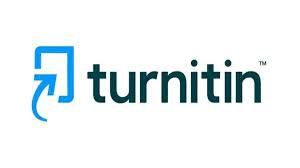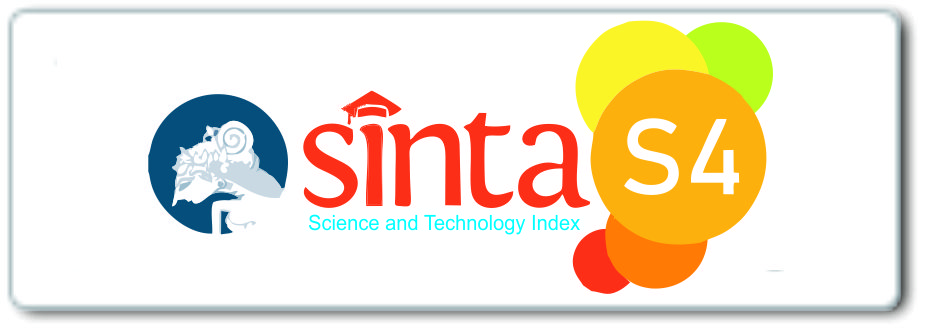Phytochemical Screening, Determination of Total Phenolic Contents and Total Flavonoid Contents of Pod Purified Extract from Caesalpinia pulcherrima (L.) Sw.
DOI:
https://doi.org/10.32734/jcnar.v7i1.19838Keywords:
Caesalpinia pulcherrima (L.) , total phenolic content, Total Flavonoid Content, UV-Vis spectrophotometry, Folin-ciocalteu.Abstract
Caesalpinia pulcherrima (L.) Sw. is traditionally used in medicine and is thought to be influenced by the presence of secondary metabolites, especially phenolic compounds and flavonoids. However, identifying the phytochemical compounds of Caesalpinia pulcherrima (L.) Sw. plants, especially on the pods, are less discussed. Here, we propose research on the identification of secondary metabolite compounds of pod-purified extract from Caesalpinia pulcherrima (L.) Sw. using phytochemical screening and also the determination of total phenolic and total flavonoid content. The extraction of Caesalpinia pulcherrima (L.) Sw. pods were processed by maceration and fractionation methods to obtain the purified extract. Total phenolic contents were determined using the Folin-Ciocalteu method. Meanwhile, total flavonoid contents were determined using the AlCl3 method. The result showed that the purified extract of Caesalpinia pulcherrima (L.) Sw. pods contained phenolics, flavonoids, alkaloids, and saponins. The total phenolic and total flavonoid content in the pod purified extract were 326.038 mg GAE/g extract and 290.026 mg QE/g extract, respectively.
Downloads
References
Pournaghi N, Sigaroodi FK, Safari E, Hajiaghaee R. A review of the genus Caesalpinia L.: emphasis on the cassane and norcassane compounds and cytotoxicity effects. J. Med. Plants. 2020; 19(76): 1 -20.
Qiao Y, Xu Q, Hu Z, Li XN, Xiang M, Liu J, Huang J, Zhu H, Wang J, Luo Z, Xue Y, Zhang Y. Diterpenoids of the Cassane Type from Caesalpinia decapetala. J. Nat. Prod, 2016; 79(12): 3134-3142
Wang DS, Nie W, Jiang TT, Ding LF, Song LD, Wu XD, Zhao QS. Caesalpanins A-C, Three Dimeric Cassane Diterpenoids from the Seeds of Caesalpinia sappan L. Chem. Biodiversity. 2020: 1-10
Sihotang ISA. Uji Aktivitas Antibakteri Ekstrak Metanol, Etil Asetat dan NHeksana dari Daun Kembang Merak Bunga Kuning (Caesalpinia pulcherrima [L.]Sw.). [skripsi]: Universitas Sumatera Utara; 2018.
Deepika S, Selvaraj CI, Roopan SM. Screening bioactivities of Caesalpinia pulcherrima L. swartz and cytotoxicity of extract synthesized silver nanoparticles on HCT116 cell line. Materials Science & Engineering C. 2020; 106: 110279-88.
Ogbeide O, Okhomina OK, Omoregie IG, Unuigbe CA, Augustine I, Isacc A, Iheanacho M, Akubuiro P, Solomon A, Irabor EEI, Owolabi JB, Falodun A. Antimalarial, ferric reducing antioxidant power and elemental analysis of Caesalpinia pulcherrima leaf extract. J Chem Soc Nigeria 2020; 45(4):704 -711.
Erharuyi O, Adhikari A, Falodun A, Aimas J, Ahmmad M, Rehan I, Choudhary MI. Cytotoxic, antiinflmmatory, and leishmanicidal activities of diterpenes isolated from the roots of Caesalpinia pulcherrima. Planta Med. 2017; 83(1- 2):100-110.
Erharuyi O, Adhikari A, Falodun A, Imad R, Choudhary MI. Derivatization of cassane diterpenoids from Caesalpinia pulcherrima (L.) Sw. and evaluation of their cytotoxic and leishmanicidal activities. Tetrahedron Lett. 2016; 57(20):2201-2206.
Sadaf S, Erharuyi O, Falodun A, Choudhary MI, Sammer Y. Crystal structure of (3S*,4S*,4aS*,5R*,6R*,6aS*,7R*,11aS*,11bR*)-5,6-bis-(benzoyloxy)3,4adihydroxy -4,7,11btrimethy l,1,2,3,4,4a,5,6,6a,7,11,11a,11b-dodecahydrophenanthro[3,2-b]-furan -4-carboxylic acid methanol monosolvate. Acta Crystallogr. 2015; E71:739- 740.
Yun X, Chen XM, Wang JY, Lu W, Zhang ZH. Cassane diterpenoids from Caesalpinia pulcherrima and their anti-inflammatory and a-glycosidase inhibitory activities. Nat. Prod. Res 2022; 36:4636–4644. [11] Faloye K, Famuyiwa S, Akinwunmi K, Tata C, Ayoola M, Fakola E, Akinyele O, Ndinteh D. Antioxidant Potentials of the Pod Extract of Caesalpinia Pulcherrima Swarta (Fabaece) and the Theoretical Evaluation of the Antioxidant Property of the Isolated Compounds. 2021; 1-14
Ogbeide OK, Akhigbe IU, Unuigbe CA, Erharuyi O, Oseghale I, Imieje V, Iheanacho C, Ikeke K, Ayeni B, Irabor E, Owolabi JB, Falodun A. Isolation, characterisation and in vivo anti-malarial investigation of pulcherrimin A from Caesalpinia pulcherrima stem bark. GSC Biological and Pharmaceutical Sciences. 2020; 12(02):056-063.
Khan F, Nida D, Mehreen L, Muhammad Y, Zulfiqar AM, Ahmed M, shaheen F, Shahana U. Immunomodulatory activities of extracts of Caesalpinia pulcherrima. Journal of Herbs, Spices & Medicinal Plants. 2018.
Oladoja FA, Irokosu ES, Ayoola MD, Elijah OO, Akanji MA, Beatrice OT, Samuel OA. Evaluation of the Antidiabetic Activity and Toxicological Properties of Hippocratea Velutina (Afzel.). Clinical Complementary Medicine and Pharmacology. 2023; 3(2):100080.
Alara OR, Abdurahman NH, Ukaegbu CI. Extraction of phenolic compounds: A review. Current Research in Food Science. 2021: 2000-2014.
Debelo H, Li M, Ferruzzi MG. Processing influences on food polyphenol profiles and biological activity. Curr. Opin. Food Sci. 2020; 32: 90– 102
Serra D, Almeida LM, Dinis TCP. Dietary polyphenols: A novel strategy to modulate microbiota-gutbrain axis, Trends Food Sci. Technol. 2018; 78: 224–233. https://doi.org/10.1016/j.tifs.2018.06.007
Uddin J, Ali Shah SW, Zahoor M, Ullah R, Alotaibi A. Chalcones: The flavonoid derivatives synthesis, characterization, their antioxidant and in vitro/in vivo antidiabetic potentials. Heliyon, 2023; 9(11). https://doi.org/10.1016/j.heliyon.2023.e22546
Abdel-Kader MS, Saeedan AS, Rehman NU, Faqihi HM, Solimin GA. New flavonoids with multiple bronchodilator activity pathways from Tephrosia purpurea L. (Pers.) growing in Saudi Arabia. Saudi Pharmaceutical Journal. 2024; 32(2024) 101992. https://doi.org/10.1016/j.jsps.2024.101992
Seo JI, Yu JS, Zhang Y, Yeo HH. Evaluating flavonoids as potential aromatase inhibitors for breast cancer treatment: In vitro studies and in silico predictions. Chemico-Biological Interactions. 2024; 2797(24)00073-5. https://doi.org/10.1016/j.cbi.2024.110927

Downloads
Published
Issue
Section
License
Copyright (c) 2025 Journal of Chemical Natural Resources

This work is licensed under a Creative Commons Attribution-ShareAlike 4.0 International License.














